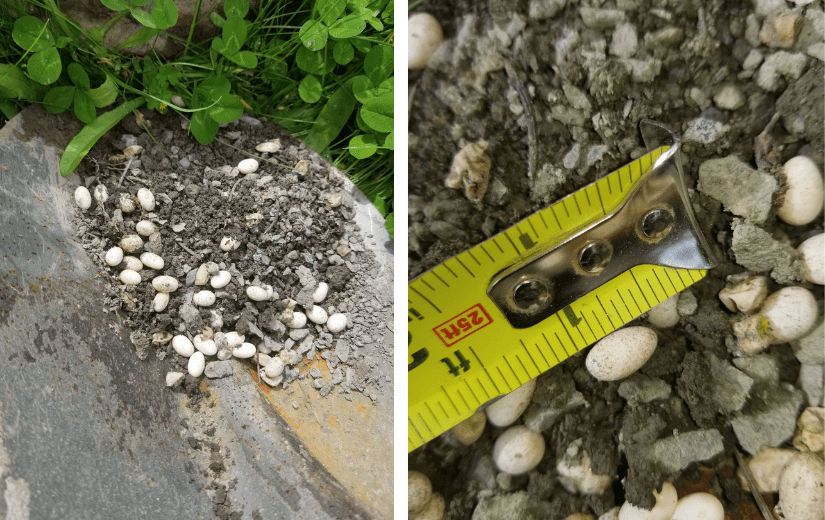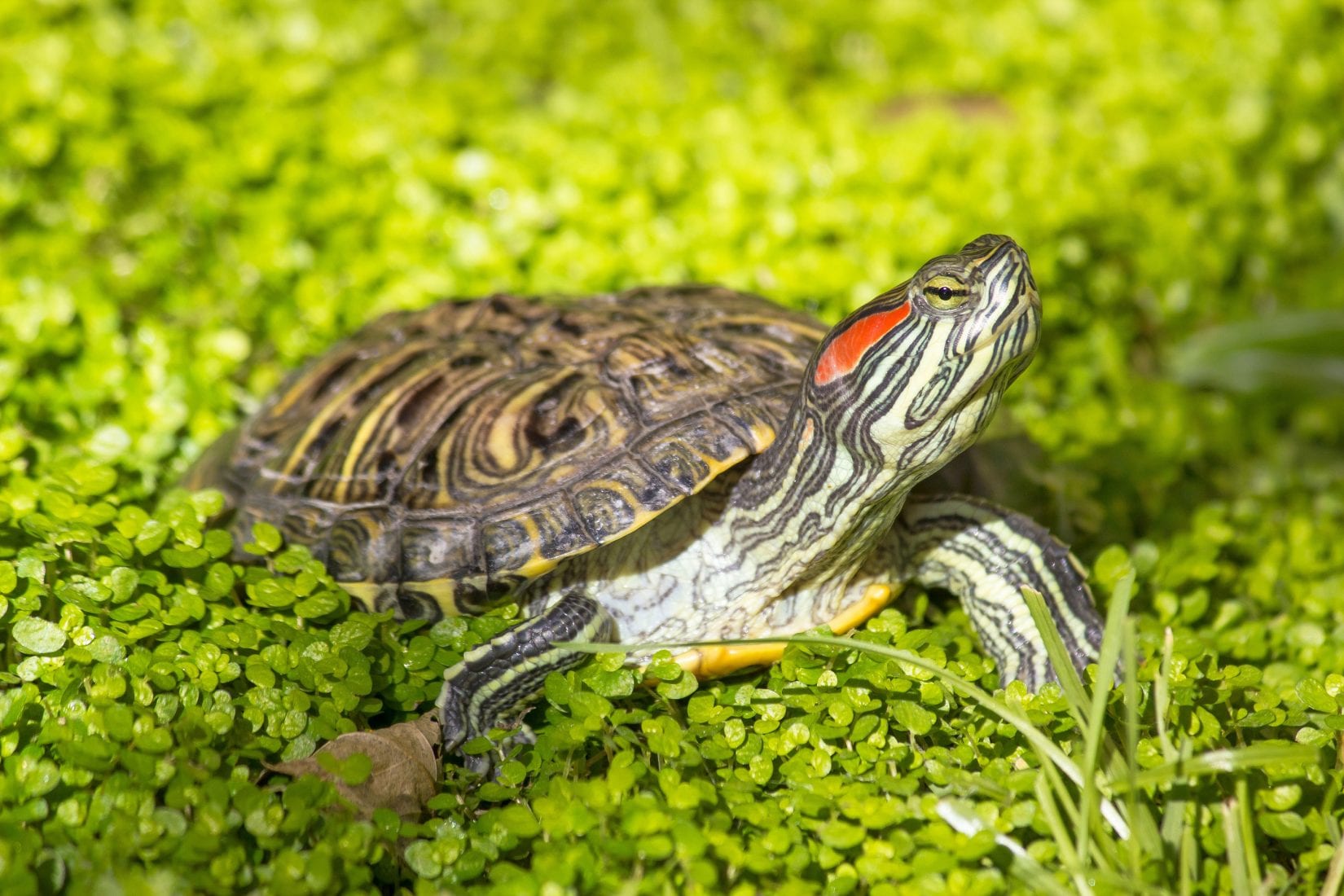B.C. is home to just one species of native freshwater turtle, the western painted turtle. Unfortunately, these native pond turtles are at risk due to habitat loss, road mortality and competition with alien invaders.
Do you know how to tell the difference between a wild turtle and an abandoned pet? Read on to learn how, and find out other fun facts about turtles.
Painted turtles

The western painted turtle is the only protected pond turtle in B.C., and not uncommon to spot sunbathing on floating logs or rocks near ponds. They have a beautiful bright red pattern on the underside of their shell, giving them their colourful name. Painted turtles eat a wide variety of aquatic plants and animals, including insects and larvae, frogs, tadpoles, worms and snails.
These B.C. shell-ebrities can live as long as 30 years, growing in size to match their age. Western painted turtles may grow to be the size of dinner plates! Unlike some other shelled animals, turtles can’t leave their shell. Their ribs form part of the shell and it grows with them from birth.
Painted turtles rely on ponds and other wetland habitat, but their habitat is under threat from urban development. Wherever possible, speak up for the protection of these important areas. You can also help simply by respecting the turtles in their habitat. Never attempt to chase or catch turtles, and leash dogs when walking near turtle habitats. Dogs have been known to injure and kill turtles, or damage their eggs and nests.
Western painted turtle eggs may also be unearthed while gardening in your own backyard. If this happens, leave the eggs alone and keep companion animals away from the area. Check with conservation groups in your area to see if any are conducting turtle monitoring. They may be interested in knowing about the eggs you found and will be able to advise next steps to keep the eggs safe!

Red-eared sliders
At first glance, red-eared slider turtles can look a lot like painted turtles. Can you spot the difference? Red-eared sliders have a thin, red eye stripe – which doesn’t appear in painted turtles. Instead of a bright red underside, red-eared sliders have a much more yellow-ish underside with no red.

Red-eared sliders are not native to B.C. These exotic turtles were introduced through the pet trade and food markets, and unfortunately, are often abandoned when they are no longer wanted as pets. Abandoning red-eared sliders is illegal, and has devastating impacts on our local wildlife. Red-eared sliders compete for habitat with painted turtles, and may move into backyard or park ponds. They can also carry diseases like Salmonella bacteria, and respiratory diseases that are harmful to other turtles. Read our best practices for wildlife control to learn how to humanely address human-wildlife conflicts with turtles.
Similar to painted turtles, red-eared sliders live as old as 40, and can grow quite large in size. Prevent the spread by never releasing them into the wild, and avoid buying exotic pets.
Snapping turtles
Snapping turtles are much more rare to spot in B.C., but they have been identified several times on southern Vancouver Island. They are likely escaped or abandoned pets. Although native to parts of Canada, snapping turtles do not belong in B.C. Their range in Canada is from Nova Scotia as far west as southern Saskatchewan.

Snapping turtles are much larger than painted turtles! In addition to size, you can also tell them apart from painted turtles by their long tails and backward-facing spines on the back of their shell. Because of their large size and strong bite, they can displace painted turtles and even prey on the native turtle hatchlings.
Although common snapping turtles may be sold as pets, they don’t belong in homes. These turtles can live for 100 years and grow as large as a stop sign. Learn more about exotic pets.
What to do if you hook a turtle
If you accidentally hook a turtle while fishing or angling, it’s important that they get help. What to do if you accidentally hook a turtle:
WildSense newsletter
Want to receive more stories like this, right in your inbox? Subscribe to WildSense, our bi-monthly wildlife newsletter.
The BC SPCA uses your personal information to update you on our work for animals as well as for advertising and analytics purposes. More information on uses and how to opt-out can be found in our Privacy Policy.

